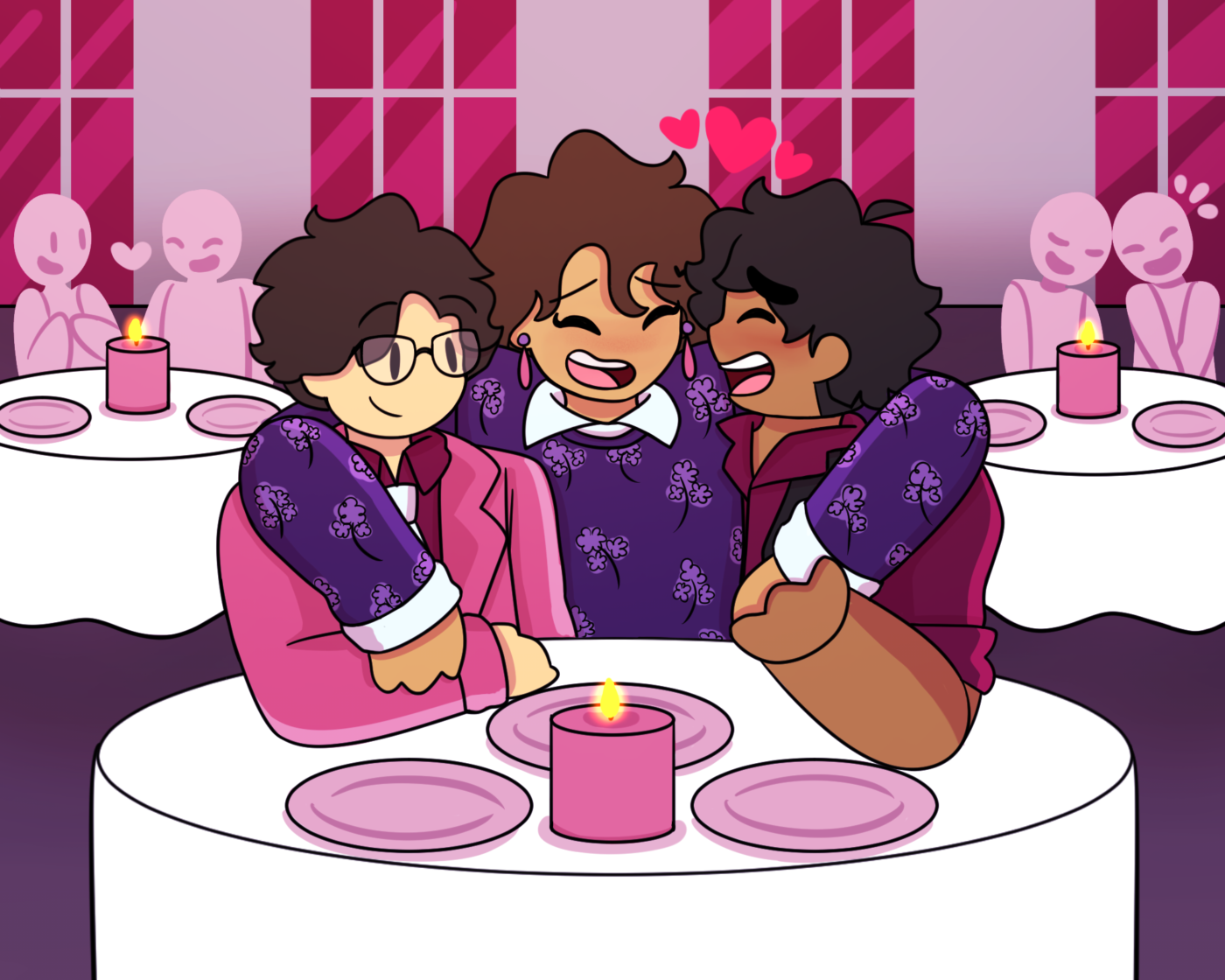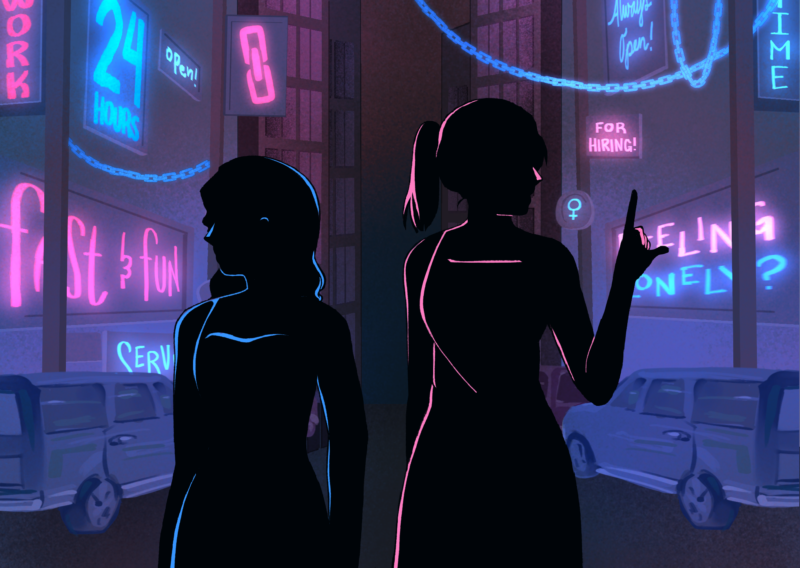In a society that glamorizes finding “the one,” non-monogamous people believe that their fate can be shared with more than one person.
MODERN NOTIONS of love have led many to yearn for “the one.” Thus, the conventional approach to love across the world has become the practice of monogamy. It is a hallmark of a “serious relationship,” and is granted legal recognition through the social institution of marriage.
However, non-monogamous individuals hold a perspective different from the norm. They believe that romantic love and intimacy does not have to be reserved for one person, and in no way does this tarnish the quality of their relationships.
Despite the recognition that non-monogamy is a valid lifestyle, the practice still suffers from societal misconceptions. Two Ateneans share what it is like to share love and intimacy with many.
Sticking to one
Non-monogamous relationships have existed for centuries, mostly in the form of polygyny. Some evolutionary experts assert that humans were initially polygynous before monogamy became widely legitimized as a structure for social order across civilizations. Nonetheless, history has a tendency to repeat itself as it sprouts long-standing traditions into new and more individually empowering forms.
In more recent years, ethical non-monogamy has slowly become a recognized consensual practice of having multiple close partners at the same time. The lifestyle can range from mere sexual encounters to intimate connections with multiple partners. As a result, more people are opting for a non-monogamous setup in their romantic relationships as they realize that there are more ways of celebrating love.
Trix* (2 AB MEC) was strictly monogamous before her then-boyfriend introduced her to the idea of polyamory where they’d be free to flirt and be sexually involved with people outside of their relationship.
As any loving partner would, Trix initially hesitated. “I was a bit skeptical, because I was concerned obviously, [I’d ask] ‘Am I not enough?,’” she shares. However, through constant assurance from her partner and learning from polyamorous friends, she got a better grasp of what non-monogamy truly entails.
Jess* (2 AB COM), on the other hand, made the shift to polyamory through a long winded journey of introspection sparked by a seemingly unrelated topic: K-pop.
Despite being in a committed relationship, she admitted a real desire to date her favorite idol, propelling a significant thought process. “Let’s say it’s not a K-pop idol, right? Like it’s some random person in a bar… that doesn’t make the situation different naman,” she recalls thinking.
With a stronger desire for new experiences in love, Jess slowly came to terms with her identity as polyamorous. However, straying from a well-established practice observed by most people is already difficult on paper, and even more so in practice.
One, two… three?
At first, Trix was passive in her open relationship but eventually felt inclined to engage in polyamory herself. She started forming both intimate and deep platonic relationships with people outside of her relationship that allowed her to explore her sexuality and discover what she likes in a partner.
Coming from a traditional and emotionally-closed household, Trix learned how to better communicate her needs through non-monogamy. The boundaries she set in place with her then-partner—such as the type of people they could not date—created a healthy environment for their relationship.
“It’s a lot of communication. You have to trust that this person is honest with you and keeps boundaries,” Trix shares. She also clarifies that boundaries vary from couple to couple, so conversations on personal preferences are crucial in making open relationships work.
On the other hand, after realizing she might be polyamorous, Jess introduced the idea of an open relationship to her then-girlfriend. Unfamiliar with ethical non-monogamy, her partner initially questioned the state of their relationship.
“It was a few days of conversations where I had to reassure [my partner] that [being polyamorous] is not something you can fix; it’s not a phase. I don’t think I can just pretend it doesn’t exist,” she points out.
After some time, Jess’s partner eventually embraced the possibility of seeing other people. They both stayed non-monogamous for the length of their relationship while remaining transparent about boundaries and treating each other as their primary partners.
Conversely, Jess’s most recent partner remained monogamous throughout their relationship but fully understood her romantic preferences. They mutually agreed on a setup known as ‘Don’t Ask, Don’t Tell’ where partners do not disclose what they do romantically outside the relationship.
The setup would eventually cause Jess anxiety over her partner possibly hearing about her romantic escapades from other people. “I don’t think I would opt into any other Don’t Ask, Don’t Tell situation,” she says, emphasizing the importance of open communication in non-monogamous relationships.
While non-monogamy has given them the freedom to generously love others, it isn’t all a rosy path.
Love undivided
Trix’s first challenge in this new lifestyle was to restructure her idea of destiny and soulmates. As someone who used to put monogamy on a pedestal, unlearning the values instilled in her was difficult but not impossible with the positive reinforcements she received from friends. Even so, the few family members who knew didn’t approve of it due to the assumption that open relationships were mere versions of cheating.
“The definition of a polyamorous or an open relationship is that it is consensual. And cheating is not consensual, because it is deception,” Trix clarifies. To her dismay, mainstream media’s inaccurate portrayals of polyamorous individuals as unfaithful partners only reinforces this stereotype.
Apart from the stigma, she furthers how women in open relationships are often objectified because the lifestyle is miscontrued as as a free pass into sexual activity. In reality, like in any other relationship, non-monogamous individuals still observe boundaries and consent.
“Just because I am open minded towards other sexual experiences, it’s not an invitation for you to just skip the pleasantries of getting to know me and asking for my consent,” Trix says.
Meanwhile, Jess recalls coming across people who call open relationships selfish. While others liken non-monogamy to dividing a pie, she believes that this is far from reality.“To me, I’m not slicing one pie for three people. I just have three pies. So it’s like, I have so much love to give. And I can give it to these people wholeheartedly,” she remarks.
Devoid of the misconceptions on non-monogamy, one thing rings true—love is not in short supply among these relationships. As Trix puts it, “Allow [non-monogamous people] to be happy and feel secure within the confines of their understanding of what makes them happy.”
*Editor’s Note: The names of the interviewees have been changed at their request in order to protect their identity and privacy.







